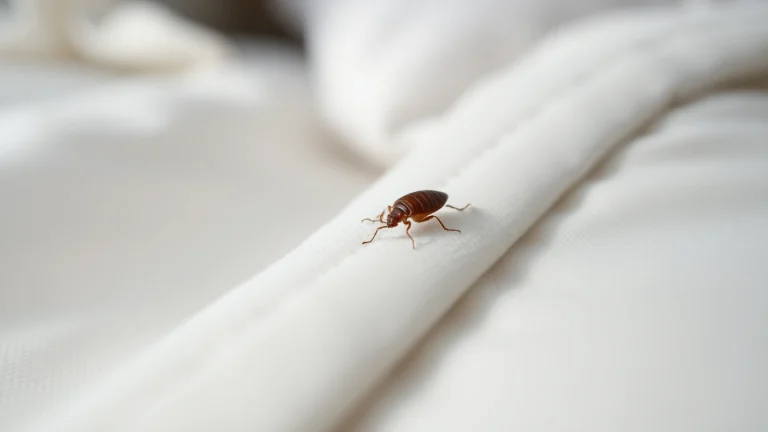
Effective Bed Bug Control Solutions for a Bug-Free Home
Understanding Bed Bugs
What Are Bed Bugs?
Bed bugs, scientifically known as Cimex lectularius, are small, wingless insects that feed exclusively on the blood of warm-blooded animals. Females can lay up to 500 eggs in their lifetime, which can lead to rapid infestations if not adequately controlled. Although they are often associated with unsanitary conditions, bed bugs can infest any home, hotel, or public space where humans sleep. Their ability to hide in tiny crevices and their resistance to many pesticides make them particularly challenging pests.
Life Cycle and Behavior of Bed Bugs
The life cycle of bed bugs consists of several stages: egg, nymph (immature), and adult. An egg is about the size of a pinhead and is white in color, making it hard to detect. After hatching, nymphs go through five molts before reaching adulthood, with each stage requiring a blood meal to progress. Bed bugs are nocturnal and tend to hide in seams of mattresses, box springs, bed frames, and other furniture during the day. Their survival skills allow them to go for months without feeding, complicating any bed bug control efforts.
Signs of Infestation
Recognizing the signs of a bed bug infestation is crucial for timely control. Some common indicators include:
- Bites: Red, itchy welts on the skin, often in a line or cluster.
- Exoskeletons: Shed skins of bed bugs can be found in their hiding spots.
- Fecal Spots: Dark, small spots that indicate bed bug waste.
- Egg Casings: Tiny white shells left behind after the eggs hatch.
- Unpleasant Odor: A musty smell that may be noticed in heavily infested areas.
Why Bed Bug Control is Essential
Health Risks Associated with Bed Bugs
While bed bugs are not known to transmit diseases, their bites can lead to significant skin irritation, allergic reactions, and secondary infections resulting from scratching. The mental health impact cannot be overlooked; individuals dealing with a bed bug infestation often report anxiety, insomnia, and other stress-related symptoms. The presence of bed bugs can create an overwhelming feeling of helplessness, especially in cases of severe infestation.
Economic Impact of Bed Bug Infestations
Bed bug infestations can lead to hefty financial burdens for homeowners and businesses alike. The costs associated with professional extermination services, the replacement of infested furniture, and the loss of tenant income for landlords can accumulate quickly. According to studies, the average cost of bed bug control can range from $300 to $1,500, depending on the severity of the infestation and the size of the dwelling. Additionally, affected businesses may suffer reputational damage, leading to decreased customer trust and business revenue.
Importance of Early Detection
Early detection of bed bugs is fundamental to effective control. Homeowners should conduct regular inspections, keeping an eye on commonly infested areas like mattresses, baseboards, and furniture. Utilizing proactive measures such as encasements for pillows and mattresses can trap bed bugs inside and make them easier to spot. Early treatment can not only save you money but also alleviate distress and minimize health risks associated with larger infestations.
Comprehensive Bed Bug Control Methods
Integrated Pest Management (IPM) Techniques
Integrated Pest Management (IPM) is a holistic approach to bed bug control that incorporates various strategies to effectively reduce and prevent infestations. This method emphasizes:
- Monitoring: Regular inspections and the use of bed bug detection tools, like interceptors, to monitor for activity.
- Prevention: Maintaining cleanliness and implementing protective measures such as encasements.
- Control Measures: Using a combination of chemical treatments, heat treatments, and vacuuming to eliminate bed bugs.
By adopting an IPM strategy, homeowners not only address the current infestation but also create a sustainable environment that minimizes future risks.
Heat Treatment vs. Chemical Solutions
When it comes to bed bug control, two primary treatment options are often employed: heat treatments and chemical solutions.
- Heat Treatments: This method involves raising the temperature of the infested area to a level that is lethal to bed bugs (typically around 115°F). It is effective for killing all life stages of bed bugs, including eggs. Heat treatments can require professional equipment and expertise, which can be costly but are often highly effective when done correctly.
- Chemical Solutions: Insecticides can be applied to infested areas to target bed bugs. While they can be effective, resistance is a growing problem. This may necessitate the combination of multiple products to achieve results. Applications must be thorough and repeated as part of a comprehensive strategy.
Determining the best approach depends on the severity of the infestation, specific circumstances, and personal preference. Many homeowners may find a combination of both methods most effective.
DIY Bed Bug Control Strategies
For those preferring a hands-on approach to bed bug control, DIY strategies can be helpful but should be undertaken with caution. Some effective practices include:
- Vacuuming: Regular vacuuming of carpets, floors, furniture, and bed frames helps remove bed bugs and their eggs. Be sure to dispose of the vacuum bag immediately and carefully.
- Washing and Drying: Wash bedding, clothing, and curtain fabrics in hot water and dry on high heat for at least 30 minutes.
- Encasements: Use bed bug-proof mattress and box spring encasements to trap any existing bugs and prevent new ones from nesting.
- Clutter Elimination: Reducing clutter in your living space decreases hiding places for bed bugs, making it more challenging for them to establish populations.
Preventing Bed Bug Infestations
Best Practices for Homeowners
Prevention is the most effective strategy against bed bugs. Homeowners should follow various best practices to reduce the chances of an infestation:
- Regular Inspections: Frequently check sleeping areas for signs of bed bugs, especially after returning from trips.
- Smart Furniture Choices: Consider using steel or wooden bed frames instead of ones with fabric, as they are easier to clean and inspect.
- Seal Cracks and Crevices: Filling in gaps in walls and around windows can prevent bed bugs from entering your home.
- Encasements and Protective Covers: Protect mattresses and pillows with covers that are designed to keep bed bugs from having access.
Travel Tips to Avoid Bringing Bed Bugs Home
Traveling is a significant contributor to bed bug infestations as these pests are easily transported in luggage. To minimize the risk of bringing bed bugs home, consider these travel tips:
- Inspect Hotel Rooms: Before unpacking, examine the bed, headboard, and furniture for signs of bed bugs.
- Keep Luggage off the Floor: Use luggage racks instead of placing bags on beds or floors where bed bugs may hide.
- Wash Clothes Immediately: Upon returning home, wash all clothing in hot water and dry them on high heat, even if they weren’t worn.
Long-term Prevention Measures
In addition to basic preventive steps, homeowners can also adopt long-term strategies to keep bed bugs at bay:
- Community Awareness: Share information with neighbors and community groups to raise awareness about bed bugs and ensure collective vigilance.
- Regular Professional Inspections: Schedule annual professional pest inspections to catch any potential issues early.
- Pest Control Education: Learn about pest behavior, identify issues early, and understand when it’s time to act or consult a professional.
When to Call a Professional Exterminator
Understanding the Costs Involved
Employing a professional exterminator can be a vital step in controlling a severe bed bug infestation. Costs can vary based on location, the size of the infestation, the services provided, and the exterminator’s experience. Typically, homeowners can expect to pay between $300 and $1,500 for a complete treatment plan, which can include multiple visits. Knowing these costs ahead of time can help in budgeting for pest control services.
Choosing the Right Pest Control Company
Selecting a competent pest control company is crucial. Look for companies that have a strong warranty policy, are certified and insured, and have positive reviews from previous customers. It’s also beneficial to ask for recommendations from friends or family. Do thorough research regarding the techniques and products used by the company to ensure they align with your preferences.
Questions to Ask Your Exterminator
When consulting with a pest control professional, make sure to ask the following questions:
- What treatment methods do you use, and how effective are they?
- What precautions should I take before and after treatment?
- How long can I expect the treatment to last, and will follow-up be necessary?
- Can you provide references from past clients?


